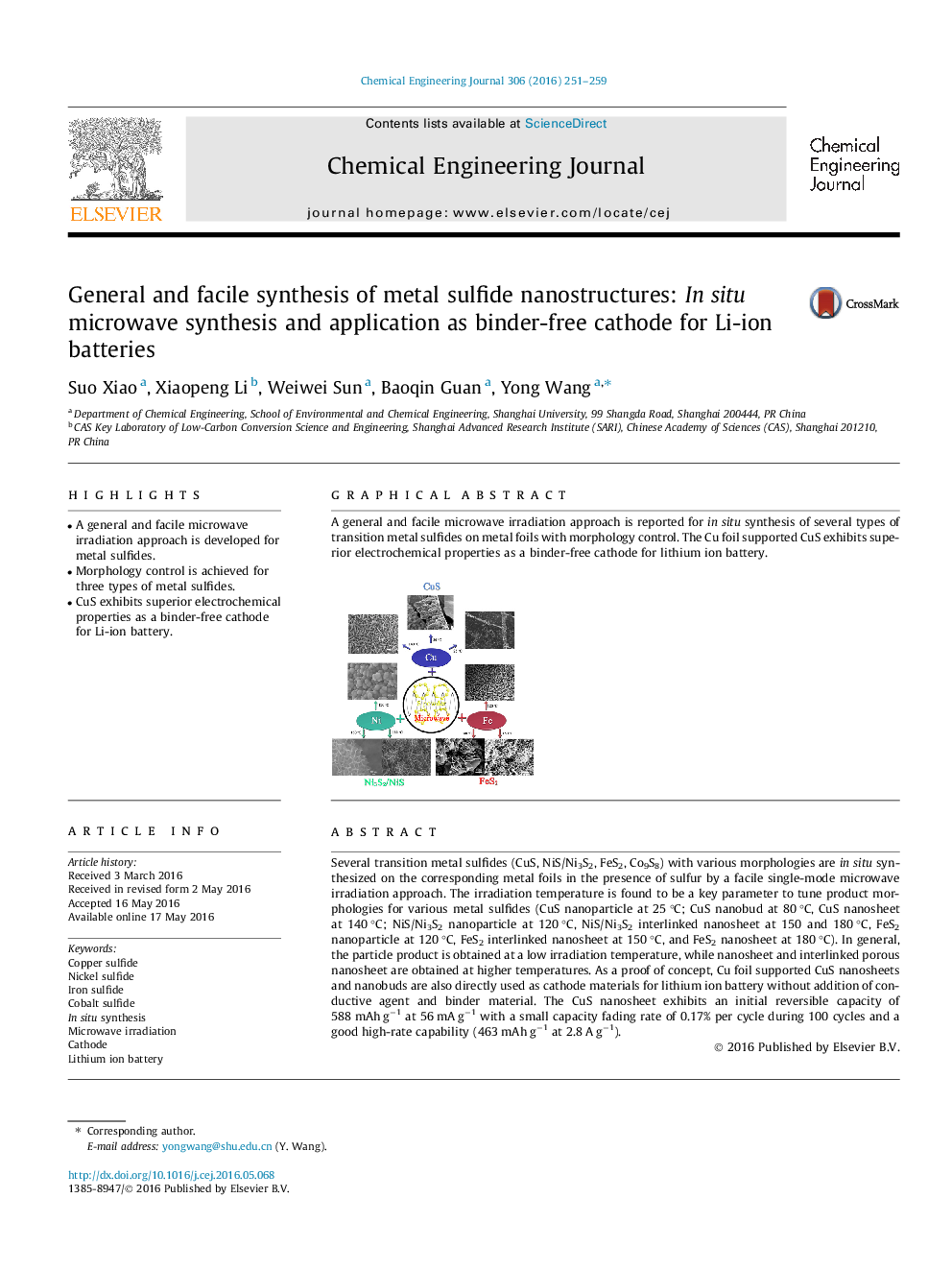| Article ID | Journal | Published Year | Pages | File Type |
|---|---|---|---|---|
| 145283 | Chemical Engineering Journal | 2016 | 9 Pages |
•A general and facile microwave irradiation approach is developed for metal sulfides.•Morphology control is achieved for three types of metal sulfides.•CuS exhibits superior electrochemical properties as a binder-free cathode for Li-ion battery.
Several transition metal sulfides (CuS, NiS/Ni3S2, FeS2, Co9S8) with various morphologies are in situ synthesized on the corresponding metal foils in the presence of sulfur by a facile single-mode microwave irradiation approach. The irradiation temperature is found to be a key parameter to tune product morphologies for various metal sulfides (CuS nanoparticle at 25 °C; CuS nanobud at 80 °C, CuS nanosheet at 140 °C; NiS/Ni3S2 nanoparticle at 120 °C, NiS/Ni3S2 interlinked nanosheet at 150 and 180 °C, FeS2 nanoparticle at 120 °C, FeS2 interlinked nanosheet at 150 °C, and FeS2 nanosheet at 180 °C). In general, the particle product is obtained at a low irradiation temperature, while nanosheet and interlinked porous nanosheet are obtained at higher temperatures. As a proof of concept, Cu foil supported CuS nanosheets and nanobuds are also directly used as cathode materials for lithium ion battery without addition of conductive agent and binder material. The CuS nanosheet exhibits an initial reversible capacity of 588 mAh g−1 at 56 mA g−1 with a small capacity fading rate of 0.17% per cycle during 100 cycles and a good high-rate capability (463 mAh g−1 at 2.8 A g−1).
Graphical abstractA general and facile microwave irradiation approach is reported for in situ synthesis of several types of transition metal sulfides on metal foils with morphology control. The Cu foil supported CuS exhibits superior electrochemical properties as a binder-free cathode for lithium ion battery.Figure optionsDownload full-size imageDownload as PowerPoint slide
